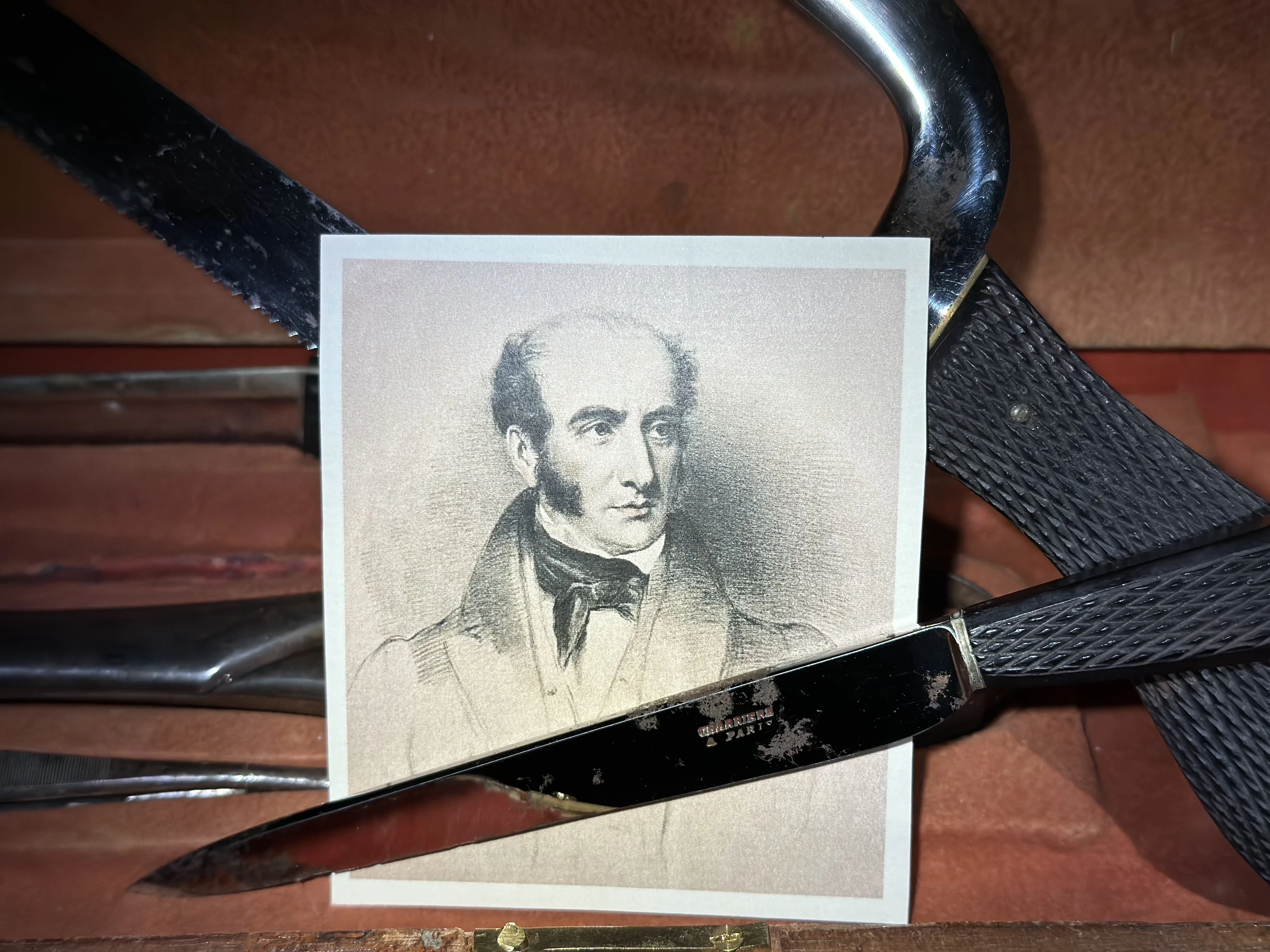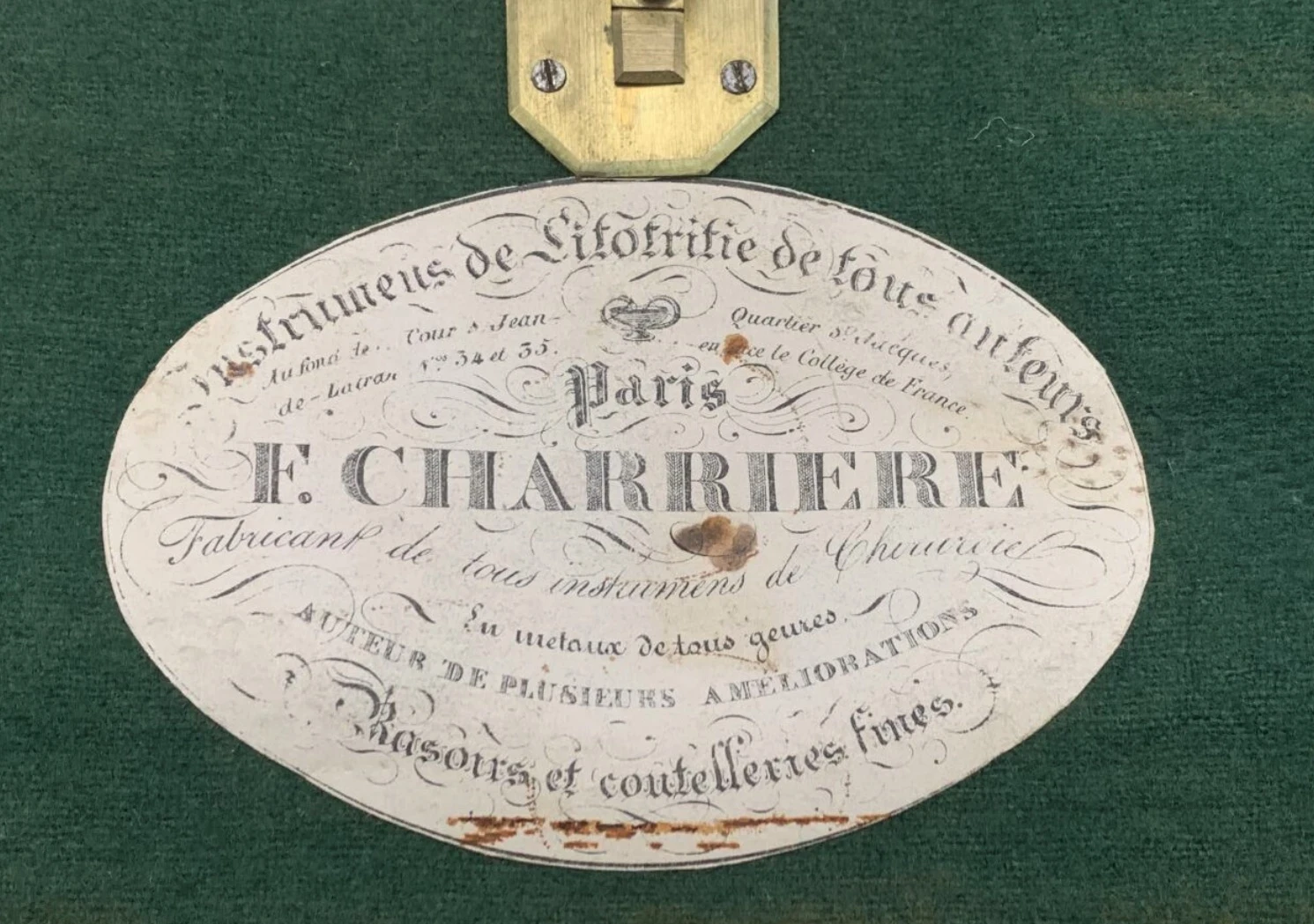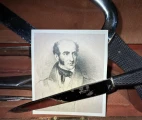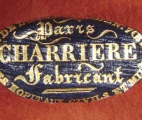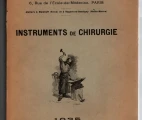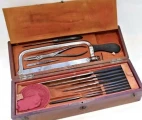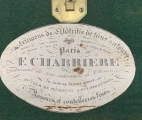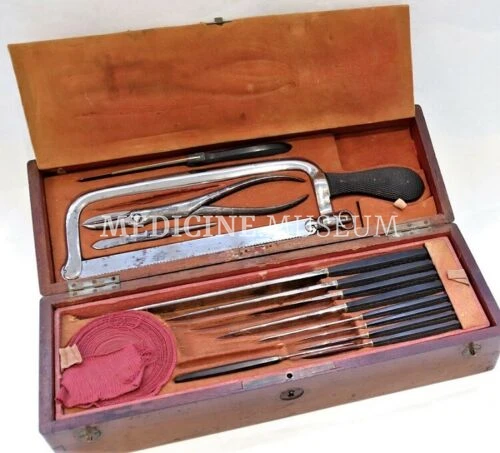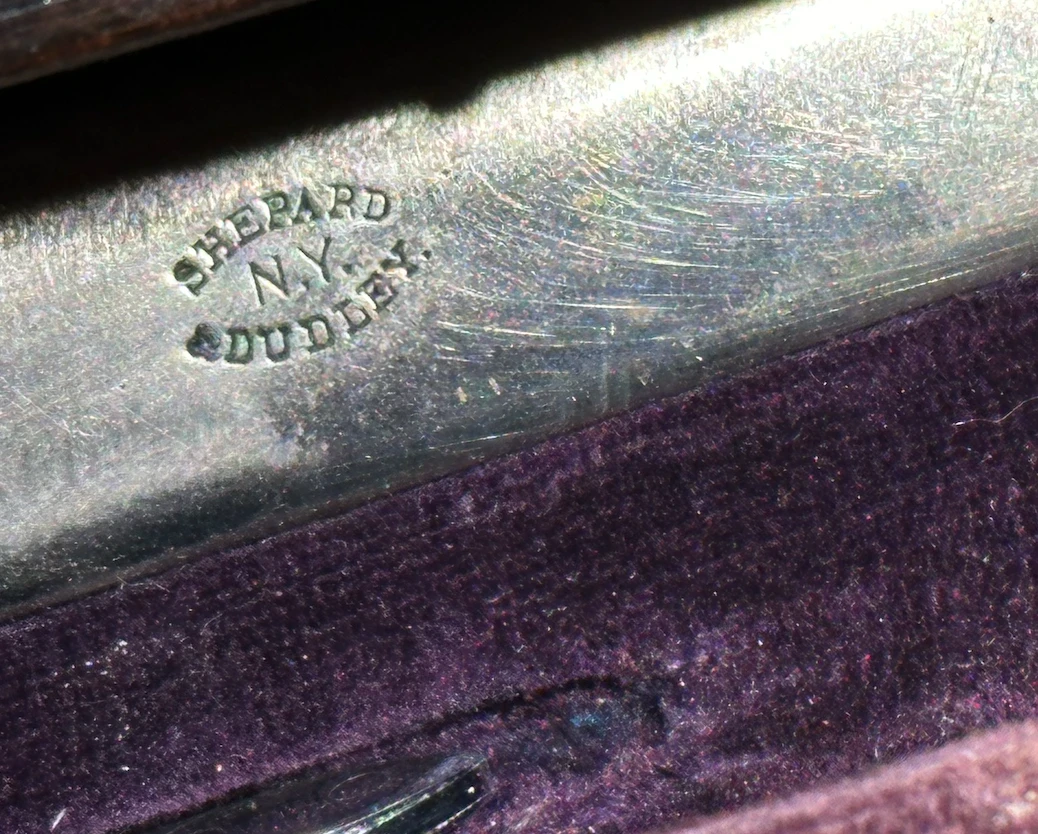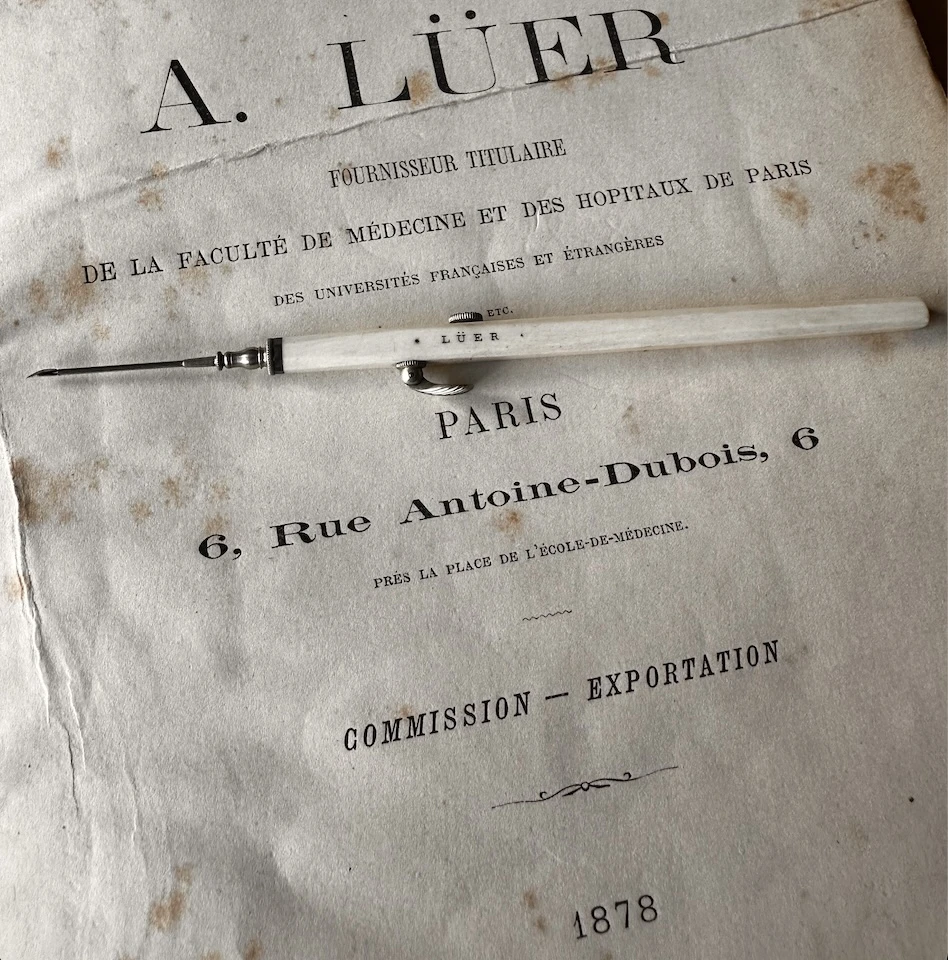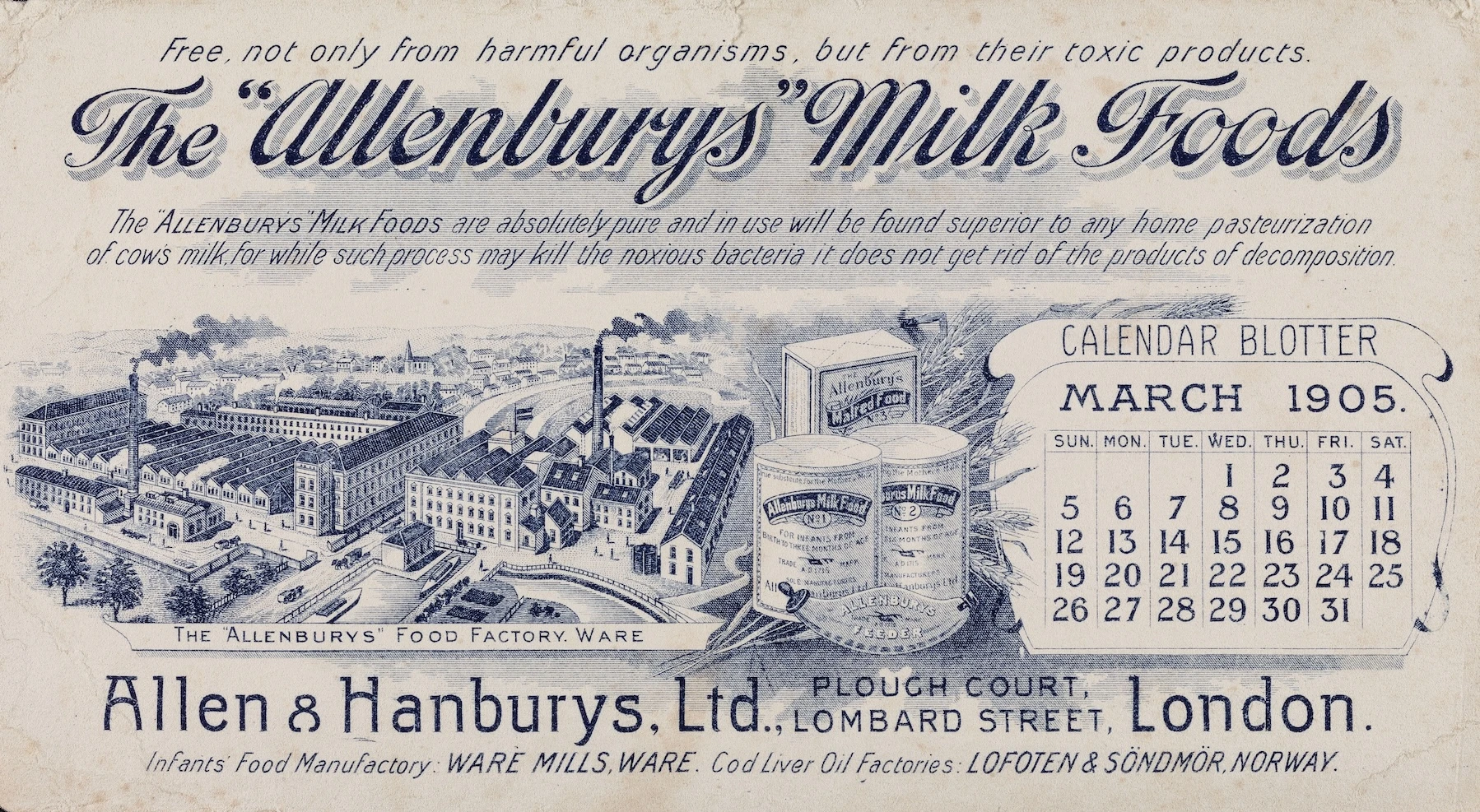Charrière á Paris
Joseph-Frédéric-Benoît Charrière – Revolutionizing Surgical Instrumentation
In the annals of medical history, few have made an impact as profound as Joseph-Frédéric-Benoêt Charrière. Born in Switzerland in 1803, Charrière moved to Paris at age 13 to learn the trade of a cutler – his journey began in France, a nation renowned for its contributions to medicine and surgery. He took over his teacher's workshop in 1820 which quickly grew to 400 employees by around 1840. Charrière would emerge as a pivotal figure in the realm of surgical instrumentation of the early 19th century, leaving a legacy that transcends time and continues to influence modern medicine. At the heart of his career was an unwavering dedication to improving the quality and efficacy of surgical tools. His approach was not one of mere creation but a meticulous refinement of existing instruments, ensuring they met the highest standards of precision and functionality.
Innovation and Precision: The Hallmarks of Charrière's Craft
What set Charrière apart was his innovative spirit. He didn't just manufacture instruments; he reimagined them. Each scalpel, forceps, and catheter crafted under his watchful eye was an embodiment of precision engineering, tailored to enhance surgical efficiency and safety. This relentless pursuit of perfection in craftsmanship earned Charrière widespread acclaim, with his instruments becoming staples in surgical theaters across Europe. In developing the instruments, he worked together with famous surgeons – he manufactured the syringe for hypodermic injections based on ideas of Pravaz, created lythotripters and other urological instruments for Civiale and Ségalas, invented system for quickly disassembled of scissors and forceps for fast cleaning, offered 'сrémaillère' – serrated ratchet to fix postion of the instrument, introduced non-rebreathing system for ether anaesthesia.
The Charrière Gauge
Perhaps Charrière's most enduring contribution is the standardization of instrument measurements. Recognizing the need for uniformity in the sizing of probes and catheters, he introduced the "Charrière gauge" or "French gauge" (as it was named by British cuttlers who could not or simply did not want to pronounce strange French name). This system, which measured instruments based on their circumference, brought an unprecedented level of consistency and reliability to surgical procedures. Remarkably, this system remains in use today, a testament to Charrière's foresight and ingenuity.
Further development
The impact of Charrière's work extends far beyond the confines of his workshop. By elevating the standards of surgical instrumentation, he indirectly shaped countless medical procedures, enhancing their safety and effectiveness. His legacy is not just in the tools he crafted but in the lives saved and improved through their use. Remembering a surgical pioneer, Joseph-Frédéric-Benoît Charrière stands as a colossus in the field of surgical manufacturing. His contributions went beyond mere craftsmanship; they were a blend of art, science, and a deep understanding of surgical needs. Charrière's work not only revolutionized his era but also laid the foundations for modern surgical practices, making him an enduring figure in medical history.
At that time, there were two main French centers, Nogent and Paris, sufficient to supply almost all the cutlery specialized in surgical instruments. One of the large factories in Nogent was own by brothers Eugène and Adolphe Vitry. It was established in 1795 and by the middle of 19 century employed 250 hand-workers. Eugène became son-in-law of Frédéric Charrière and thsi family relations helped to share production between Paris and Nogent.
After the death of Frédéric Charrière on July 22, 1876, Eugène Edmond Vitry bought the building at 6 rue de l'Ecole de Médecine, where he moved in with his wife. Eugène Collin was then his only tenant (the company Robert et Collin was dissolved in June 1884). Shortly afterwards, in 1877, Eugène Vitry sold the Nogent factory to his brother Adolphe, who in turn sold it to Mr. Schwob in 1887.
In 1866, the Charrière company was auctioned off to two former employees of Frédéric Charrière: Robert and Collin, who published their first and only catalog in 1867. The establishment was later taken over by Pierre Urbain Louis Collin; his grandson Pierre succeeded him in 1923. Pierre Gentille took over the former Charrière company, which had in the meantime become Maison Collin, in 1957. The Charrière-Collin-Gentile collection was sold in 1972 when Pierre Gentile retired. The sale of this collection marked the end of one hundred and fifty years of activity for the most illustrious French manufacturer of surgical instruments.
In 1852, Charrière was succeeded by his son Jean-Jules, who unfortunately passed away in 1865. His father, Joseph-Frédéric-Benoît Charrière, a renowned surgical instrument maker, passed away on April 28, 1876, in Paris at the age of 73. Following the death of Jean-Jules Charrière, the Maison Charrière was acquired in 1866 at the auction by Charrière's two employees, Louis Apollinaire Robert and Anatole Pierre Urbain Louis Collin (1831-1923). When Robert died in 1871, the Collin family took over the management of the company. The company worked under the name Maison Collin till 1957 when it was taken over by Maison Gentile. The last one closed its doors permanently in 1972, thus closing the 150 years of its history of innovations in the medical instrument manufacturing.
Important dates and addresses
There are known some dates and addresses of the company Charrière á Paris which can help in proper dating of the instruments.
1821. The company Charrière was founded by Joseph-Frédéric-Benoît Charrière. Young cutler (18 years) just received his "grade de maître coutelier".
1821. First known address belongs to his former teacher, Vindent: Court Saint-Jean-de-Latran (V arr.)
1833. Charrière moved to Rue de l'Ecole de Médecine, 7 and later — 9 (today it is rue de l’École de Médecine n°7 bis)
1842. Expanded to Rue de l'Ecole de Médecine, 6 (opposite to the previous address).
1852. The Maison Charrière was succeeded by his son Jean-Jules Charrière.
1866. After the unfortunate death of Jean-Jules in 1865, the company was bought at the auction by Louis Apollinaire Robert and Anatole Pierre Urbain Louis Collin. New name of the company: Robert et Collin.
1867. The first and the only catalogue by Robert et Collin.
1871. The Collin family took over the management of the company. The company works under the name Maison Collin
1957. The Maison Collin was taken over by Maison Gentile.
1972. The Maison Gentile was closed.
For more details on the innovation of the company's founder, see the article on Joseph-Frédéric-Benoît Charrière.
Catalogues
Spécimen d'instruments de chirurgie modèles Charrière. Charrière. Paris : Méquignon, 1854. Full-text scan in PDF in the Digital Bibliothèques d'Université Paris Cité.
References
Dr. Julien Wyplosz. Les catalogues d'instruments de chirurgie. https://numerabilis.u-paris.fr/medica/bibliotheque-numerique/presentations/instruments.php
